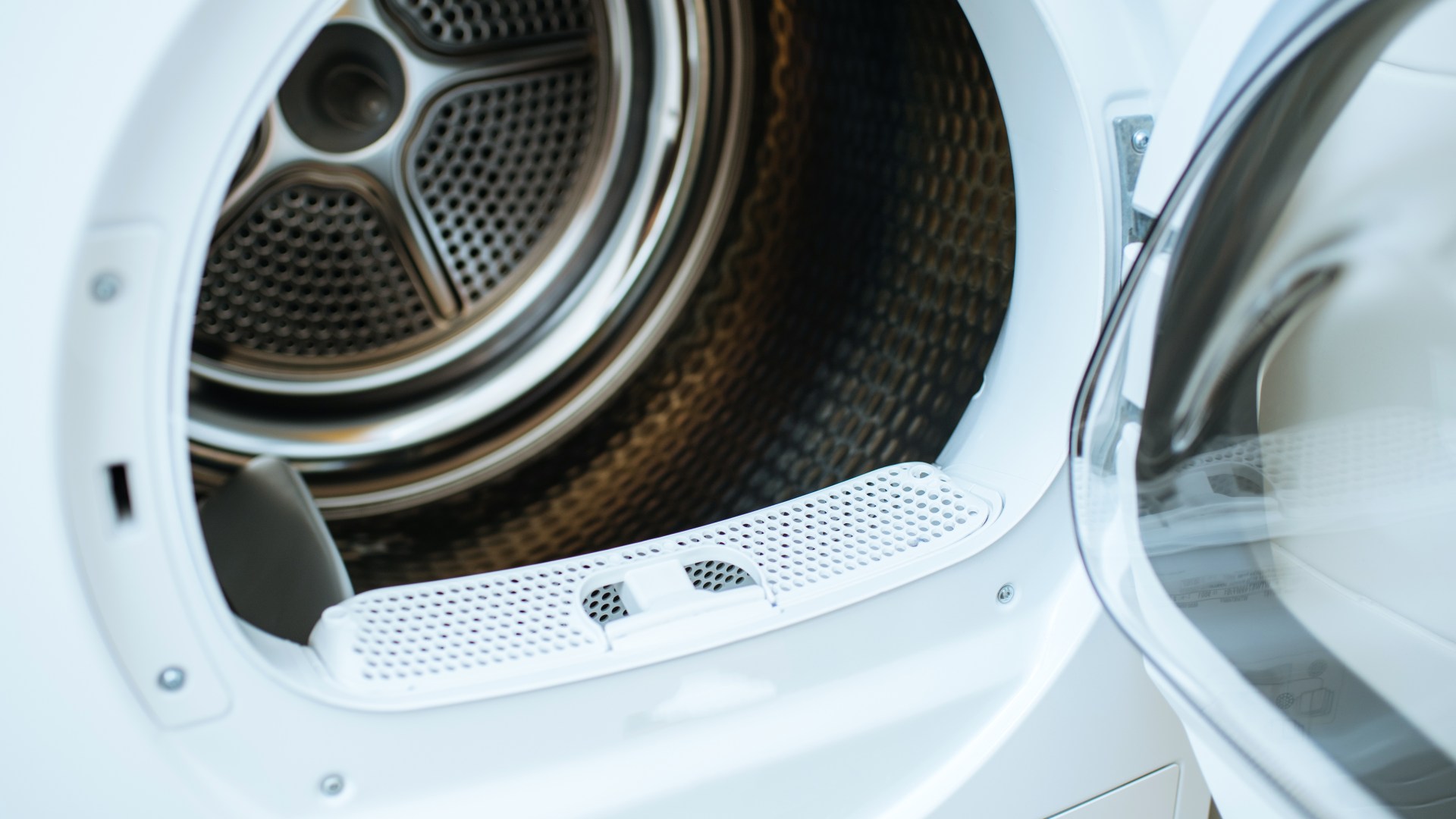Business
Harris to make unexpected campaign stop in Texas

Abortion and reproductive rights likely to be at heart of vice-president’s message in Republican-leaning state
Business
Will it contribute to employee burnout?

 Anurag Garg
Anurag GargWhen ChatGPT burst onto the scene in late 2022, PR agency founder Anurag Garg was eager for his team of 11 to quickly incorporate the technology in their workflow, so the business could keep up with its competitors.
Mr Garg encouraged his employees to use the AI language tool for the agency’s long list of daily tasks, from coming up with story ideas for clients, pitches to offer the media, and transcribing meeting and interview notes.
But rather than increase the team’s productivity, it created stress and tension.
Staff reported that tasks were in fact taking longer as they had to create a brief and prompts for ChatGPT, while also having to double check its output for inaccuracies, of which there were many.
And every time the platform was updated, they had to learn its new features, which also took extra time.
“There were too many distractions. The team complained that their tasks were taking twice the amount of time because we were now expecting them to use AI tools,” says Mr Garg, who runs Everest PR and divides his time between the US and India.
The entire aim of introducing AI to the company was to simplify people’s workflows, but it was actually giving everyone more work to do, and making them feel stressed and burnt out.”
As a business leader, Mr Garg also began to feel overwhelmed by the growing number of AI tools being launched, and feeling he had to keep pace with every new addition. Not only was he using ChatGPT like his team, but Zapier to track team tasks, and Perplexity to supplement client research.
“There’s an overflow of AI tools in the market, and no single tool solves multiple problems. As a result, I constantly needed to keep tabs on multiple AI tools to execute tasks, which became more of a mess. It was hard to track which tool was supposed to do what, and I started getting utterly frustrated,” says Mr Garg.
“The market is flooded with AI tools, so if I invest in a specific app today, there’s a better one available next week. There’s a constant learning curve to stay relevant, which I was finding hard to manage, leading to burnout.”
Mr Garg backtracked on the mandate that the team should use AI in all their work, and now they use it primarily for research purposes – and everyone is much happier.
“It was a learning phase for us. The work is more manageable now as we are not using too many AI tools. We’ve gone back to everything being done directly by the team, and they feel more connected and more involved in their work. It’s much better,” says Mr Garg.
 Getty Images
Getty ImagesThe stress Mr Garg and his team experienced using AI tools at work is reflected in recent research.
In freelancer platform Upwork’s survey of 2,500 knowledge workers in the US, UK, Australia and Canada, 96% of top executives say they expect the use of AI tools to increase their company’s overall productivity levels – with 81% acknowledging they’ve increased demands on workers over the past year.
Yet 77% of employees in the survey say AI tools have actually decreased their productivity and added to their workload. And 47% of employees using AI in the survey say they have no idea how to achieve the productivity gains their employers expect.
As a result, 61% of people believe that using AI at work will increase their chances of experiencing burnout – rising to 87% of people under 25, as revealed in a separate survey of 1,150 Americans, by CV writing company Resume Now.
Resume Now’s survey also highlights how 43% of people feel AI will negatively impact work-life balance.
Whether the tech is based on AI or not, surveys suggest many workers are already feeling overwhelmed.
A further study by work management platform Asana highlights the effect of introducing more work-based apps.
In its survey of 9,615 knowledge workers across Australia, France, Germany, Japan, the UK and the US, it found that, of those that use six to 15 different apps in the workplace, 15% say they miss messages and notifications because of the number of tools.
For those that use 16 or more, 23% say they are less efficient, and their attention span is reduced because of constantly having to switch apps.
As Cassie Holmes, management professor at the University of California in Los Angeles, commented in the study: “Using multiple apps requires additional time to learn them and switch between them, and this lost time is painful because we are so sensitive to wasted time.”
 Gemma Shoots People
Gemma Shoots PeopleLawyer turned coach Leah Steele now specialises in helping legal professionals overcome burnout, with many coming to her feeling burdened by their companies’ increased workload demands after introducing AI-based productivity tools. It’s an experience she’s familiar with, after the introduction of a new technology platform in a previous role saw her client caseload rise from 50 to 250.
“The biggest thing I’m seeing is this continuous competing demand to do more with less – but companies are not really considering whether the systems and the tech that they’re introducing are giving an outcome that isn’t helpful,” says Bristol- based Ms Steele.
“Everything’s moving so quickly. It’s a constant battle to keep on top of things to develop expertise in such a cutting edge area.”
The burnout lawyers are now experiencing, Ms Steele adds, is not only about the growing volume of work tech and AI tools are facilitating, but the knock on effects.
“When we’re looking at burnout, it’s not just about the volume of the work we’re doing, but how we feel about the work and what we’re getting from it,” says Ms Steele.
“You could feel stressed about having ended up in an environment of high volume and low control, when what you originally wanted to do was interact personally with clients and make a difference to them.”
Ms Steele adds: “You could also feel stressed about the risk of losing your job, and the fear of being replaced because you’re no longer enjoying the work as it’s become so tech driven.”
The Law Society of England and Wales acknowledges that lawyers need better support from law firm leaders to make the most of new technology like AI.
“While AI and new technologies can make legal work more efficient by automating routine tasks, they can also create more work for lawyers, not less,” says president Richard Atkinson.
“Learning to use these tools takes time and lawyers often need to undertake training and adapt their work processes. Many technologies were not originally designed for the legal sector, which can make the transition more challenging.”
 Flown
FlownAlicia Navarro is the founder and chief executive of Flown, an online platform and community which helps people focus on “deep work” – tasks that require sustained concentration. She agrees that there is an “avalanche” of AI tools, but says they need to be used correctly.
“There’s such a huge amount of filtering and learning that has to take place before these tools can even start to become productive elements in our lives”.
But she argues that for small firms, with limited resources, AI can be a big help.
“It’s an incredibly empowering thing for start-ups to be able to do a lot more, or companies to be able to pay more dividends or pay their team more.”
Money
B&M shoppers rush to buy ‘bargain’ toys perfect for Christmas scanning from just 10p

B&M shoppers are rushing to do their Christmas shopping with toys scanning between 10p and £1.
Two savvy savers recently spotted the cheap toys in their local branches and finished festive shopping for the children in their family.
The shoppers posted their find on the Extreme Couponing and Bargains UK Facebook group after snapping up various toys for pennies.
One of the members who posted about their finds shared pictures of the toys they purchased and said that their daughter’s Christmas shopping was “finished thanks to this”.
Another member gushed over the find, saying they “never get any of the bargains but today [they] did!”
They also added that items were apparently reduced due to having old barcodes on.
Plenty of fellow bargain hunters have liked and commented on the posts keen to find toys in their local branch.
One user said: “Wow! Well done on being in the right place!”
Another commented: “Brilliant well done on your bargains.”
And: “That is amazing!”
A B&M employee even confirmed the discounts in the comment section.
They said: “These are all old stock so it’s not going to be every store. I work for B&M.”
Any B&M shoppers looking to snap up the £1 and under toys won’t be able to find it online.
It’s not guaranteed you’ll find it in your local branch either, so it might be worth calling your local branch ahead to avoid a wasted trip.
In any case, you should always shop around before buying something like this as you might find the same, or similar, item for less at another retailer.
You can use online price comparison sites like Price Spy and Trolley to see if a product you have found is the cheapest against others.
You can also use the Google Shopping/Product tab to do a quick scan of the internet.
However, we had a quick look online to see if any other retailers are selling some of these toys for under £1 and there weren’t any.
If you’re looking to pick up a bargain on your next B&M shop, you should get the retailer’s scanner app.
It’s free to download on to your smartphone via the Apple App Store or Google Play.
Once downloaded, you can use the camera on your phone to scan barcodes in-store.
It then tells you if a product has been reduced in price, even before a member of staff has changed the label.
The app also offers you a description of the product you are scanning.
It’s quite common for shoppers to find under £1 bargains in their local B&M stores.
One customer recently found a stainless steel egg slotter for just 10p instead of £2.99.
Another shopper found pet toys slashed to 10p in their local branch this summer.
Remember, you can find your nearest B&M branch by using the retailer’s store locator tool on its website.
Other ways to save money at B&M
One ex-B&M manager said the best time to visit your local store is first thing on a Wednesday.
This is when staff slash items to as little as 10p to clear excess stock and make way for new lines.
Deals expert Tom Church urged shoppers to keep an eye out for red stickers products as well.
These are put on special buy products that have also been reduced in price.
It’s worth signing up to Facebook pages dedicated to hunting for bargains from B&M and other discounters too.
Some of the best ones to join are B&M Bargains, Extreme Money Saving Deals and More and Extreme Couponing and Bargains UK group.
How to bag a bargain
SUN Savers Editor Lana Clements explains how to find a cut-price item and bag a bargain…
Sign up to loyalty schemes of the brands that you regularly shop with.
Big names regularly offer discounts or special lower prices for members, among other perks.
Sales are when you can pick up a real steal.
Retailers usually have periodic promotions that tie into payday at the end of the month or Bank Holiday weekends, so keep a lookout and shop when these deals are on.
Sign up to mailing lists and you’ll also be first to know of special offers. It can be worth following retailers on social media too.
When buying online, always do a search for money off codes or vouchers that you can use vouchercodes.co.uk and myvouchercodes.co.uk are just two sites that round up promotions by retailer.
Scanner apps are useful to have on your phone. Trolley.co.uk app has a scanner that you can use to compare prices on branded items when out shopping.
Bargain hunters can also use B&M’s scanner in the app to find discounts in-store before staff have marked them out.
And always check if you can get cashback before paying which in effect means you’ll get some of your money back or a discount on the item.
Business
Is crypto addiction real? New study reveals who’s most at risk of ‘harm’- The Week

A new study published in the International Journal of Mental Health and Addiction suggests that it is not how often people engage in crypto trading, but how they trade that matters most. According to the study, individuals who opt for riskier assets over safer ones, or who invest with limited information or without a clear strategy, are at a higher risk of experiencing “harm.” Harm is typically defined as the negative consequences arising from excessive engagement in an activity and is central to public health approaches to addiction.
ALSO READ: Is crypto now legal in India, Congress asks after Nirmala Sitharaman announcement
In this correlational study, researchers examined the most prevalent forms of harm associated with cryptocurrency speculation and how these are linked to known risk factors such as fear of missing out (FOMO), impulsivity and problem gambling.
Crypto prices are often strongly influenced by hype, social media influencers and are characterised by strong periods of price appreciation followed by large price depreciation. The researchers recruited 487 crypto investors from an online panel and measured their crypto engagement, impulsivity, FOMO, problem gambling and the types of harm experienced that could be at least moderately be attributed to cryptocurrency. It was observed that problem gambling scores (PGSI) and FOMO scores were reliable predictors of the level of harm reported, with the strongest model obtained for financial harm.
The findings suggest the need to screen for speculative trading in gambling studies and that resistance to FOMO is an important element that would need to be targeted in clinical interventions for people experiencing harm.
It has already been observed that cryptocurrency traders are vulnerable to some of the harms prevalent in gambling. A 2022 study by Oksanen et al found that cryptocurrency traders reported higher levels of mental health disorders, psychological distress, and perceived loneliness compared to non-traders. Additionally, crypto market traders scored significantly higher in alcohol use and excessive gambling.
Cryptocurrency is not yet formally recognised as an addiction, but the latest study indicates that certain individuals may be more vulnerable to harm than others. The researchers concluded that these findings highlight the need for more detailed studies on the relationship between risk factors and specific trading and investing behaviours. They also emphasise the importance of ongoing public education about the risks and protective factors that can promote safer investment in these speculative markets.
Money
Pay rise for nearly half a million workers from TODAY – see how much better off you will be

HALF a million workers employed by more than 15,000 companies paying the real living wage will get a pay boost from today.
The rate will rise by 60p to £12.60 an hour across the UK and by 70p to £13.85 in London for workers.
Unlike the government-set minimum wage, the real living wage is the only UK pay rate based on the cost of living.
It is voluntary meaning, employers can opt to pay their staff this amount but are not legally required to do so.
As of today, a full-time worker earning the new real living wage will earn £2,262 a year more than a worker earning the current government minimum, according to the Living Wage Foundation.
Employers who are signed up have until the deadline of May 1 to pay the increased rates but are encouraged to pay it as soon as possible.
Katherine Chapman, director of the foundation said low-paid workers have been “hardest hit by the cost-of-living crisis”.
She said: “The real living wage remains the only UK wage rate calculated based on actual living costs, and the new rates announced today will make a massive difference to almost half a million workers who will see their pay increase.”
The real living wage was introduced in April 2016, and since then thousands of employers have opted in.
Recent joiners include Pieminister, Fred Perry and the National Theatre.
They join half of the FTSE 100 companies and household names like Aviva, Everton FC, Ikea, Burberry and LUSH.
Darren Taylor, country people and culture manager at furniture retailer Ikea, said: “A business’s success is purely driven by its people, and as a values-driven company we care about our co-workers and their wellbeing. “
“That’s why we’re committed to pay our co-workers a Real Living Wage that creates a fairer, inclusive and healthier standard of living for the many.”
You can find out which companies are signed up to pay the Real Living Wage on the foundation’s website, www.livingwage.org.uk/.
The rates are separate from the government’s national living wage, which sets the minimum hourly rate at £11.44 an hour for workers over the age of 21.
The national minimum wage is also set by the government and it is the minimum pay per hour for workers under the age between 18-20.
Will the national living wage increase?
The national living wage set out by the government usually rises every year to keep in line with increasing prices.
In April this year, the rate increased 10% from £10.42, and has generally risen by more than inflation in recent years.
In September, the Low Pay Commission (LPC), which advises the government on the minimum wage, announced plans to raise the statutory rate to £12.10 per hour.
The government usually confirms how much the National Living Wage will rise when it delivers its Autumn Statement, which will take place next week on October 30.
However, the national minimum wage for children under 18 will not be raised to the same level as that planned for adults.
This means kids aged 16 and 17 still have a slightly lower hourly minimum wage requirement.
Currently, those under 18 are legally required to get £6.40.
Apprentices are paid the same rate, too.
Who gets the National Minimum Wage and am I entitled?
TO qualify for the National Minimum Wage, you have to be of school-leaving age, which is usually above 16.
You are eligible to receive the pay rate if you work full-time, part-time or as a casual labourer.
You are also entitled to the National Minimum Wage if you are an agency worker.
Apprentices also qualify for a National Minimum Wage, as well as trainees and staff still in their probationary period.
The rates also apply to disabled workers.
Those who are self-employed, voluntary workers, company directors, and family members who live in the home of the employer and do household chores do not qualify for the minimum wage.
Au pairs, members of the armed forces, and people on a government employment programme are also not entitled to the payment.
Business
UK water regulator could be scrapped in ‘root and branch’ review

Environment secretary says new commission will consider all options regarding Ofwat
Money
Little-known button on tumble dryer that could cut energy bills by £35 a year – and it’s better for your clothes

A MONEY-saving expert has revealed a little-known button on tumble dryers that could cut energy bills by £35 a year.
As temperatures drop, many households will be worried about the lengthy and sometimes costly process of drying their clothes indoors.
Tumble dryers are household staples for many, but they can become pricey to run.
Especially now Ofgem‘s new energy price cap has come into effect, leading the average bill to rise by £149 a year.
But there is a little-known feature that could help curb the cost of running the device.
The Sun spoke to Fiona Peake a money-saving expert at Ocean Finance, who explained that by using the “sensor dry” function households could save up to 20% on costs.
Fiona said this setting “detects” when your clothes are dry and automatically stops the machine.
She explained: “This prevents over-drying—a common issue that wastes energy and can damage fabrics
“By making the switch to this setting, households could save as much as 20% on their drying costs, making a noticeable difference in monthly energy expenses.”
So for example, a vented tumble dryer can cost up to £179.21 to run per year, according to analysis by consumer website Which?
But using the sensor dry feature could shave up to 20% or £35 off the yearly bill.
This would mean a household would be left with a bill of £144.21.
But this could be higher or lower depending on your model and how often you use the machine.
For example, a heat pump washing machine usually costs less to run than its vented counterpart.
On average the annual cost to run one of these tumble dryers is £76.09.
With this in mind, a household could save £15 on their yearly bill by using the sensor dry feature.
To make the saving you will also have to ensure that your washing machine has the sensor dry feature.
Some tumble dryers will have the sensor dry feature built-in meaning it runs automatically without you having to do anything.
Otherwise, it can be found on the dial of your tumble dryer where the other settings can be found.
If you are confused it may be worth digging out your manual to see if your tumble dryer has the feature or searching the details of your model online.
Fiona added that cleaning the lint filter regularly can also help save money.
She added: “A blocked filter can cause your dryer to work harder and prolong drying time, wasting both energy and money.
“Keeping your dryer well-ventilated allows the machine to operate more effectively, helping you save more money.”
Other ways to save money drying your clothes
There are plenty of other gadgets which can help dry your clothes quicker this winter.
For example, heated airers can be a cost-effective tool that costs a few pennies to run.
Heated airers can save money on your energy bill as it offers a cheaper alternative to drying your clothes on the radiator.
This method can become costly as it requires you to turn on the central heating.
Heated clothes airers are like traditional ones, but you plug them in, with the bars of the dryer heating up.
You can buy covers for some as well, which speeds up the time it takes to dry your clothes.
Aldi launched an upright heated airer across its stores on October 20, for £79.99.
It was part of its Special Buy range meaning once stock has been cleared it will not be coming back.
The retailer also launched a smaller version for £34.99.
You can find a similar version on Amazon or Dunelm if you can’t find one at Aldi.
Another hack for keeping your clothes dry is using a dehumidifier.
These devices can help remove dampness from your home and can prevent the growth of mould.
They can also be great for helping clothes dry quicker when placed near your airer.
This is because it can help suck the moisture of your clothes helping them dry at a faster pace.
4 ways to keep your energy bills low
Laura Court-Jones, Small Business Editor at Bionic shared her tips.
1. Turn your heating down by one degree
You probably won’t even notice this tiny temperature difference, but what you will notice is a saving on your energy bills as a result. Just taking your thermostat down a notch is a quick way to start saving fast. This one small action only takes seconds to carry out and could potentially slash your heating bills by £171.70.
2. Switch appliances and lights off
It sounds simple, but fully turning off appliances and lights that are not in use can reduce your energy bills, especially in winter. Turning off lights and appliances when they are not in use, can save you up to £20 a year on your energy bills
3. Install a smart meter
Smart meters are a great way to keep control over your energy use, largely because they allow you to see where and when your gas and electricity is being used.
4. Consider switching energy supplier
No matter how happy you are with your current energy supplier, they may not be providing you with the best deals, especially if you’ve let a fixed-rate contract expire without arranging a new one. If you haven’t browsed any alternative tariffs lately, then you may not be aware that there are better options out there.
-

 Science & Environment1 month ago
Science & Environment1 month agoHyperelastic gel is one of the stretchiest materials known to science
-

 Technology4 weeks ago
Technology4 weeks agoIs sharing your smartphone PIN part of a healthy relationship?
-

 Science & Environment1 month ago
Science & Environment1 month ago‘Running of the bulls’ festival crowds move like charged particles
-

 Science & Environment1 month ago
Science & Environment1 month agoHow to unsnarl a tangle of threads, according to physics
-

 Science & Environment1 month ago
Science & Environment1 month agoMaxwell’s demon charges quantum batteries inside of a quantum computer
-

 Technology1 month ago
Technology1 month agoWould-be reality TV contestants ‘not looking real’
-

 Science & Environment4 weeks ago
Science & Environment4 weeks agoX-rays reveal half-billion-year-old insect ancestor
-

 Science & Environment1 month ago
Science & Environment1 month agoSunlight-trapping device can generate temperatures over 1000°C
-

 Science & Environment1 month ago
Science & Environment1 month agoLiquid crystals could improve quantum communication devices
-

 Science & Environment1 month ago
Science & Environment1 month agoQuantum ‘supersolid’ matter stirred using magnets
-

 Womens Workouts4 weeks ago
Womens Workouts4 weeks ago3 Day Full Body Women’s Dumbbell Only Workout
-

 Technology3 weeks ago
Technology3 weeks agoUkraine is using AI to manage the removal of Russian landmines
-

 TV3 weeks ago
TV3 weeks agoসারাদেশে দিনব্যাপী বৃষ্টির পূর্বাভাস; সমুদ্রবন্দরে ৩ নম্বর সংকেত | Weather Today | Jamuna TV
-

 Science & Environment1 month ago
Science & Environment1 month agoLaser helps turn an electron into a coil of mass and charge
-

 Science & Environment1 month ago
Science & Environment1 month agoWhy this is a golden age for life to thrive across the universe
-

 Science & Environment1 month ago
Science & Environment1 month agoA new kind of experiment at the Large Hadron Collider could unravel quantum reality
-

 Science & Environment1 month ago
Science & Environment1 month agoQuantum forces used to automatically assemble tiny device
-

 Science & Environment1 month ago
Science & Environment1 month agoA slight curve helps rocks make the biggest splash
-

 Science & Environment1 month ago
Science & Environment1 month agoNerve fibres in the brain could generate quantum entanglement
-

 Science & Environment1 month ago
Science & Environment1 month agoHow to wrap your mind around the real multiverse
-

 Football3 weeks ago
Football3 weeks agoRangers & Celtic ready for first SWPL derby showdown
-
Business3 weeks ago
DoJ accuses Donald Trump of ‘private criminal effort’ to overturn 2020 election
-

 News3 weeks ago
News3 weeks agoMassive blasts in Beirut after renewed Israeli air strikes
-

 Business3 weeks ago
Business3 weeks agoWhen to tip and when not to tip
-

 News2 weeks ago
News2 weeks agoNavigating the News Void: Opportunities for Revitalization
-

 News1 month ago
News1 month ago▶️ Hamas in the West Bank: Rising Support and Deadly Attacks You Might Not Know About
-

 Science & Environment1 month ago
Science & Environment1 month agoITER: Is the world’s biggest fusion experiment dead after new delay to 2035?
-

 MMA3 weeks ago
MMA3 weeks agoJulianna Peña trashes Raquel Pennington’s behavior as champ
-

 Science & Environment1 month ago
Science & Environment1 month agoTime travel sci-fi novel is a rip-roaringly good thought experiment
-

 News1 month ago
News1 month ago▶️ Media Bias: How They Spin Attack on Hezbollah and Ignore the Reality
-

 Science & Environment1 month ago
Science & Environment1 month agoNuclear fusion experiment overcomes two key operating hurdles
-

 Science & Environment1 month ago
Science & Environment1 month agoPhysicists have worked out how to melt any material
-
News1 month ago
the pick of new debut fiction
-

 News1 month ago
News1 month agoOur millionaire neighbour blocks us from using public footpath & screams at us in street.. it’s like living in a WARZONE – WordupNews
-

 Technology3 weeks ago
Technology3 weeks agoSamsung Passkeys will work with Samsung’s smart home devices
-

 News2 weeks ago
News2 weeks ago▶ Hamas Spent $1B on Tunnels Instead of Investing in a Future for Gaza’s People
-

 Sport3 weeks ago
Sport3 weeks agoWales fall to second loss of WXV against Italy
-

 Technology3 weeks ago
Technology3 weeks agoMicrophone made of atom-thick graphene could be used in smartphones
-

 MMA3 weeks ago
MMA3 weeks agoPereira vs. Rountree prediction: Champ chases legend status
-

 Sport3 weeks ago
Sport3 weeks agoBoxing: World champion Nick Ball set for Liverpool homecoming against Ronny Rios
-

 MMA2 weeks ago
MMA2 weeks ago‘Uncrowned queen’ Kayla Harrison tastes blood, wants UFC title run
-

 Technology1 month ago
Technology1 month agoMeta has a major opportunity to win the AI hardware race
-

 Technology4 weeks ago
Technology4 weeks agoWhy Machines Learn: A clever primer makes sense of what makes AI possible
-

 Sport3 weeks ago
Sport3 weeks agoWorld’s sexiest referee Claudia Romani shows off incredible figure in animal print bikini on South Beach
-

 MMA3 weeks ago
MMA3 weeks agoDana White’s Contender Series 74 recap, analysis, winner grades
-

 Technology3 weeks ago
Technology3 weeks agoMusk faces SEC questions over X takeover
-

 News3 weeks ago
News3 weeks agoFamily plans to honor hurricane victim using logs from fallen tree that killed him
-

 Sport3 weeks ago
Sport3 weeks agoCoco Gauff stages superb comeback to reach China Open final
-

 Technology3 weeks ago
Technology3 weeks agoThis AI video generator can melt, crush, blow up, or turn anything into cake
-

 Sport3 weeks ago
Sport3 weeks agoSturm Graz: How Austrians ended Red Bull’s title dominance
-

 MMA2 weeks ago
MMA2 weeks agoPereira vs. Rountree preview show live stream
-

 News2 weeks ago
News2 weeks agoHeavy strikes shake Beirut as Israel expands Lebanon campaign
-

 TV2 weeks ago
TV2 weeks agoLove Island star sparks feud rumours as one Islander is missing from glam girls’ night
-

 Sport3 weeks ago
Sport3 weeks agoMan City ask for Premier League season to be DELAYED as Pep Guardiola escalates fixture pile-up row
-

 News3 weeks ago
News3 weeks agoHeartbreaking end to search as body of influencer, 27, found after yacht party shipwreck on ‘Devil’s Throat’ coastline
-

 News3 weeks ago
News3 weeks ago‘Blacks for Trump’ and Pennsylvania progressives play for undecided voters
-

 Money3 weeks ago
Money3 weeks agoWetherspoons issues update on closures – see the full list of five still at risk and 26 gone for good
-

 Technology3 weeks ago
Technology3 weeks agoThe best budget robot vacuums for 2024
-
Business3 weeks ago
Bank of England warns of ‘future stress’ from hedge fund bets against US Treasuries
-

 Business3 weeks ago
Business3 weeks agoChancellor Rachel Reeves says she needs to raise £20bn. How might she do it?
-

 MMA3 weeks ago
MMA3 weeks agoAlex Pereira faces ‘trap game’ vs. Khalil Rountree
-

 TV3 weeks ago
TV3 weeks agoPhillip Schofield accidentally sets his camp on FIRE after using emergency radio to Channel 5 crew
-
Business3 weeks ago
Sterling slides after Bailey says BoE could be ‘a bit more aggressive’ on rates
-

 News3 weeks ago
News3 weeks agoGerman Car Company Declares Bankruptcy – 200 Employees Lose Their Jobs
-

 Technology3 weeks ago
Technology3 weeks agoTexas is suing TikTok for allegedly violating its new child privacy law
-

 Science & Environment1 month ago
Science & Environment1 month agoPhysicists are grappling with their own reproducibility crisis
-

 Science & Environment1 month ago
Science & Environment1 month agoA tale of two mysteries: ghostly neutrinos and the proton decay puzzle
-

 TV3 weeks ago
TV3 weeks agoMaayavi (මායාවී) | Episode 23 | 02nd October 2024 | Sirasa TV
-

 Technology3 weeks ago
Technology3 weeks agoPopular financial newsletter claims Roblox enables child sexual abuse
-

 News2 weeks ago
News2 weeks agoBalancing India and China Is the Challenge for Sri Lanka’s Dissanayake
-

 Technology3 weeks ago
Technology3 weeks agoEpic Games CEO Tim Sweeney renews blast at ‘gatekeeper’ platform owners
-

 Football3 weeks ago
Football3 weeks agoSimo Valakari: New St Johnstone boss says Scotland special in his heart
-

 News3 weeks ago
News3 weeks agoWoman who died of cancer ‘was misdiagnosed on phone call with GP’
-

 Technology3 weeks ago
Technology3 weeks agoApple iPhone 16 Plus vs Samsung Galaxy S24+
-

 News3 weeks ago
News3 weeks agoHull KR 10-8 Warrington Wolves – Robins reach first Super League Grand Final
-

 MMA3 weeks ago
MMA3 weeks agoUFC 307 preview show: Will Alex Pereira’s wild ride continue, or does Khalil Rountree shock the world?
-
Business3 weeks ago
Head of UK Competition Appeal Tribunal to step down after rebuke for serious misconduct
-

 Sport3 weeks ago
Sport3 weeks agoAaron Ramsdale: Southampton goalkeeper left Arsenal for more game time
-

 Technology2 weeks ago
Technology2 weeks agoA very underrated horror movie sequel is streaming on Max
-

 Technology2 weeks ago
Technology2 weeks agoThe best shows on Max (formerly HBO Max) right now
-

 Entertainment3 weeks ago
Entertainment3 weeks ago“Golden owl” treasure hunt launched decades ago may finally have been solved
-

 Sport1 month ago
Sport1 month agoJoshua vs Dubois: Chris Eubank Jr says ‘AJ’ could beat Tyson Fury and any other heavyweight in the world
-

 Technology4 weeks ago
Technology4 weeks agoArtificial flavours released by cooking aim to improve lab-grown meat
-
Business3 weeks ago
Eurosceptic Andrej Babiš eyes return to power in Czech Republic
-

 News1 month ago
News1 month agoYou’re a Hypocrite, And So Am I
-

 Science & Environment1 month ago
Science & Environment1 month agoRethinking space and time could let us do away with dark matter
-

 Science & Environment1 month ago
Science & Environment1 month agoCaroline Ellison aims to duck prison sentence for role in FTX collapse
-
News1 month ago
The Project Censored Newsletter – May 2024
-

 Technology3 weeks ago
Technology3 weeks agoUniversity examiners fail to spot ChatGPT answers in real-world test
-

 Science & Environment3 weeks ago
Science & Environment3 weeks agoMarkets watch for dangers of further escalation
-

 Technology3 weeks ago
Technology3 weeks agoAmazon’s Ring just doubled the price of its alarm monitoring service for grandfathered customers
-

 Sport3 weeks ago
Sport3 weeks agoChina Open: Carlos Alcaraz recovers to beat Jannik Sinner in dramatic final
-

 MMA3 weeks ago
MMA3 weeks agoKayla Harrison gets involved in nasty war of words with Julianna Pena and Ketlen Vieira
-

 Technology3 weeks ago
Technology3 weeks agoUlefone Armor Pad 4 Ultra is now available, at a discount
-

 News3 weeks ago
News3 weeks agoReach CEO Jim Mullen: If government advertises with us, we’ll employ more reporters
-
Business3 weeks ago
Maurice Terzini’s insider guide to Sydney
-

 Technology3 weeks ago
Technology3 weeks agoOpenAI secured more billions, but there’s still capital left for other startups
-

 Health & fitness3 weeks ago
Health & fitness3 weeks agoNHS surgeon who couldn’t find his scalpel cut patient’s chest open with the penknife he used to slice up his lunch
-

 Money3 weeks ago
Money3 weeks agoWhy thousands of pensioners WON’T see State Pension rise by full £460 next year
-
Business3 weeks ago
The search for Japan’s ‘lost’ art








You must be logged in to post a comment Login